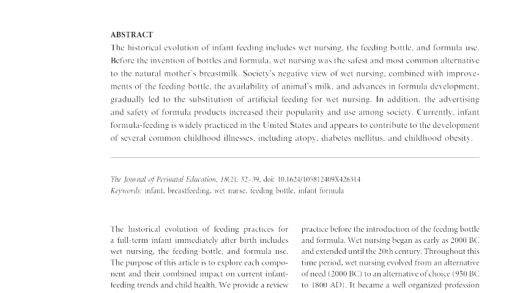Sable fur trade impacts sable populations through overhunting and habitat loss. Conservation efforts aim to balance demand with sustainability. Alternatives to animal fur, like synthetic and plant-based fabrics, are emerging in the fashion industry, catering to ethical consumerism.
What are Sables?
Sable fur comes from the sable, a small carnivorous mammal belonging to the weasel family. Found primarily in the boreal forests of Russia, particularly in Siberia, these creatures thrive in cold, dense woods where they can hunt and find shelter. Sables are known for their sleek bodies, bushy tails, and dense fur that varies in color and texture.
In terms of characteristics, sables are agile and quick, with a keen sense of smell and sharp eyesight. They typically weigh between 1.5 to 2.5 kg and have a body length of 45 to 65 cm. Their fur is not just an adaptation to the cold; it serves as a vital component of their survival, providing insulation and camouflage against predators.
Understanding the habitat of sables is crucial for appreciating the luxury of sable fur. As their populations are affected by environmental changes and habitat loss, the conservation of their natural habitat becomes increasingly important. Protecting these areas ensures that sables continue to thrive and that their exquisite fur remains a sustainable resource.
The Luxury of Sable Fur
Sable fur is often regarded as one of the most luxurious furs in the fashion industry. Its rarity, softness, and warm insulating properties make it a coveted material for high-end garments. The luxurious nature of sable fur stems from the unique qualities that set it apart from other furs.
- Softness: The density of sable fur gives it an incredibly soft texture, which many consider unparalleled.
- Warmth: With its thick undercoat, sable fur provides excellent insulation, making it ideal for cold climates.
- Rarity: The limited population of sables contributes to the high value of their fur, making it a symbol of status.
Additionally, the craftsmanship involved in creating garments from sable fur further enhances its luxury status. Designers often highlight the unique characteristics of sable pelts, ensuring that each piece is not only functional but also a work of art.
Colors of Sable Coats
The colors of sable coats are diverse and contribute to their appeal. Ranging from rich browns to lighter shades, sable fur can exhibit various hues, which are often influenced by their environment and genetics. The most common colors include:
- Dark Brown: The classic sable color, known for its depth and richness.
- Light Brown: A softer shade that offers a more delicate appearance.
- Silver: A rare and striking hue that adds uniqueness to sable garments.
Each color variation not only affects the aesthetic but also the market value of sable fur. The more unique and rare the color, the higher the demand, contributing to the luxury image associated with this exquisite material.
The Role of Sable Fur in the Trade
Sable fur plays a significant role in the fur trade, representing a lucrative market that spans across continents. The demand for sable pelts has led to an intricate web of trade practices that involve both legal and illegal channels. Sables are captured primarily for their luxurious fur, which is highly sought after in the fashion industry.
Key aspects of the sable fur trade include:
- Global Demand: Sable fur is in high demand, particularly in regions like Europe and Asia, where it is associated with high fashion.
- Price Fluctuations: The price of sable pelts can vary greatly based on factors such as color, quality, and market demand.
- Legal Regulations: There are strict regulations governing the trade of sable fur, aimed at protecting the species from over-exploitation.
- Impact on Local Economies: The trade provides income to local communities, but it also raises concerns about sustainability and conservation.
Understanding these dynamics is crucial for appreciating the complexities involved in the sable fur trade and its impact on the species.
Sable Pelts: A Symbol of Wealth
Sable pelts are often regarded as a status symbol, representing wealth and elegance. The luxurious quality of sable fur, combined with its rarity, elevates its status in the fashion world. Wearing sable is not just about warmth; it’s about making a statement.
Several factors contribute to the perception of sable pelts as symbols of wealth:
- Rarity: With limited availability, genuine sable fur is rare, making it a prized possession.
- Craftsmanship: The intricate craftsmanship involved in creating sable garments enhances their luxurious appeal.
- Historical Significance: Historically, sable fur has been associated with nobility and affluence, further solidifying its status.
In a world where fashion often reflects personal identity, sable pelts serve as a powerful symbol of success and exclusivity.
Ethical Considerations of Animal Fur
The use of animal fur in fashion, particularly sable fur, raises significant ethical concerns. As awareness of animal rights grows, many consumers are questioning the morality of using animal pelts in clothing and accessories.
Key ethical issues include:
- Animal Welfare: The treatment of animals in fur production has come under scrutiny, with many advocating for humane practices.
- Sustainability: The environmental impact of fur farming and trapping practices raises concerns about sustainability and biodiversity.
- Alternatives: With advancements in technology, there are now synthetic alternatives that mimic the look and feel of fur without harming animals.
As consumers become more conscious of their choices, the fashion industry faces pressure to adapt and consider the ethical implications of using sable and other animal furs.
Impact of Fur Trade on Sable Populations
Sable fur trade significantly affects sable populations across their natural habitats. The fur trade can lead to overexploitation, threatening the survival of these animals. Understanding the dynamics of this trade is essential for conservation efforts.
Several factors highlight the impact of the fur trade on sable populations:
- Overhunting: High demand for sable fur results in intensive hunting practices, often exceeding sustainable limits.
- Habitat Loss: As sables are hunted, their habitats are also threatened by logging and human encroachment, further diminishing their numbers.
- Regulatory Challenges: While there are regulations to protect sables, enforcement can be weak, allowing illegal hunting to persist.
- Population Decline: Studies indicate that in some regions, sable populations have decreased dramatically due to unsustainable hunting practices.
Conservation organizations advocate for sustainable practices and stricter regulations to ensure that sable populations remain healthy. Protecting these animals is crucial, not just for the fur trade but for maintaining ecological balance in their habitats.
Alternatives to Animal Fur in Fashion
With increasing awareness of ethical concerns surrounding sable fur and other animal furs, the fashion industry is exploring various alternatives. Modern consumers are seeking sustainable and cruelty-free options that do not compromise on style.
Some notable alternatives include:
- Synthetic Fur: Made from polyester or acrylic, synthetic fur mimics the look and feel of real fur without harming animals.
- Recycled Materials: Fashion brands are utilizing recycled textiles to create garments that are both stylish and environmentally friendly.
- Plant-Based Fabrics: Innovations in fabrics derived from plants, such as hemp or organic cotton, offer sustainable options for consumers.
- Vegan Leather: Alternatives like mushroom leather or lab-grown leather provide cruelty-free options that are gaining popularity.
The shift towards these alternatives reflects changing consumer values and a growing desire for ethical fashion. The industry is responding, promoting sustainable practices that respect both animals and the environment, ensuring that style does not come at the cost of ethical considerations.





Comments are closed.